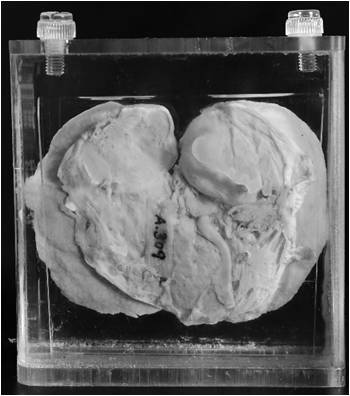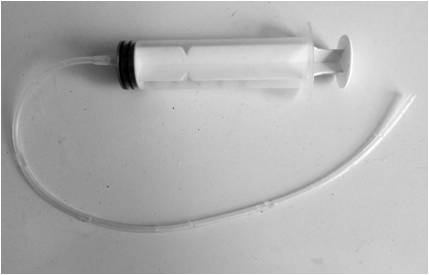A method for optimizing the preservation of pathological gross specimens
A specimen and pathological technology, applied in the field of specimen preservation, can solve the problems that affect the observation and shooting of specimens, the difficulty of bubbles overflowing, and the infiltration of tissues, etc., and achieve the effect of avoiding inability to overflow, optimizing preservation, and improving fluidity and permeability.
- Summary
- Abstract
- Description
- Claims
- Application Information
AI Technical Summary
Problems solved by technology
Method used
Image
Examples
Embodiment 1
[0049] Ulcerative intestinal tuberculosis specimen
[0050] The original specimen of ulcerative intestinal tuberculosis was soaked in 10% formalin fixative solution for a long time, and the color of the specimen was dull, such as Figure 4 As shown, after being processed and preserved by the optimized preservation method of the present invention, the specimen returns to the color close to the fresh specimen, as Figure 5 shown.
Embodiment 2
[0052] Cardiac hypertrophy specimen
[0053] The original specimen of cardiac hypertrophy has been soaked in 10% formalin fixative for a long time, and the color of the specimen is dull, such as Figure 6 Shown, after being processed by the present invention, specimen returns to the color and luster close to fresh specimen, as Figure 7 shown.
Embodiment 3
[0055] Transitional cell carcinoma of the renal pelvis
[0056] The original specimen of transitional cell carcinoma of the renal pelvis was soaked in 10% formalin fixative for a long time, and the color of the specimen was dull, such as Figure 8 Shown, after being processed by the present invention, specimen returns to the color and luster close to fresh specimen. After using 40% sodium glycerol acetate preservation solution, a large number of bubbles appeared in the container, and the bubbles did not disappear after a week, such as Figure 9 Shown; After using 20% sodium glycerol acetate used in the present invention instead, the bubbles in the container disappear almost completely, as Figure 10 As shown, the 20% sodium glycerol acetate preservation solution has good fluidity and permeability, and avoids the situation that a large number of bubbles cannot overflow.
[0057]After converting the specimen picture into an 8-channel grayscale picture, use the image analysis...
PUM
 Login to View More
Login to View More Abstract
Description
Claims
Application Information
 Login to View More
Login to View More - R&D
- Intellectual Property
- Life Sciences
- Materials
- Tech Scout
- Unparalleled Data Quality
- Higher Quality Content
- 60% Fewer Hallucinations
Browse by: Latest US Patents, China's latest patents, Technical Efficacy Thesaurus, Application Domain, Technology Topic, Popular Technical Reports.
© 2025 PatSnap. All rights reserved.Legal|Privacy policy|Modern Slavery Act Transparency Statement|Sitemap|About US| Contact US: help@patsnap.com



